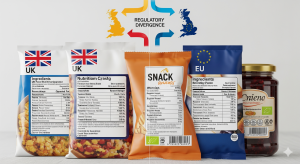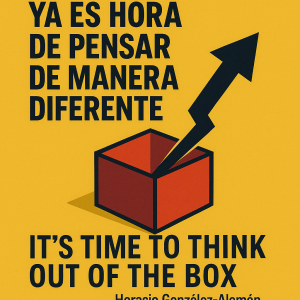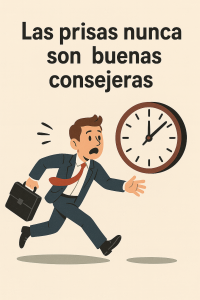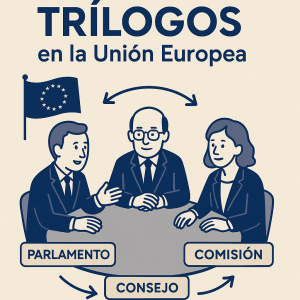Technology, Food Chain improvement and level playing field.
The case of Blockchain.
On the occasion of the Global Food Forum organized by farm Europe in Brussels (2-3 December), and under the chairmanship of Mr. Paolo de Castro, a very interesting debate was held on the role of technology in the agrifood system.
Below, you will find the comments I made during my intervention in the panel, mainly focused on the use of blockchain.
– Technology is clearly a driver for the next agrifood model that is emerging at global and European level. It would be impossible to respond to our challenges (people + planet) without the leverage of innovation and technology.
– So we should ask ourselves… What is the European society demanding from our food system? The European Commission is working in a political response to this question (the most expected communication on 2030 vision for sustainable food systems), but we already know some of the main drivers behind:
- Sustainable production and consumption
- Food safety and food integrity
- Producing more with less
- Reuse… less food losses and waste
- Healthy diets
- Less impact on the climate
- Trust and transparency
- Long term competitiveness of the model
- Cooperation among the entire food chain and public authorities…
I am not an expert in technology, as many of the people in the audience, I guess, but it seems clear to me that blockchain technology has much to say and to do in all those issues.
I will try to share with you three ideas that I hope will be useful for all of you, and also interesting for the debate.
- First, the main potential benefits of blockchain for the food chain.
- Second, how blockchain can fit into the European model as we know it now.
- Third, some comments and suggestions.
FIRST– Keeping in mind that blockchain is a very new technology, and because of this, it depends on the confidence on the potential users and also, on how blockchain scales up on the market to become the reference. It’s obvious that this new tool is a very much promising opportunity to create value in some areas of the food chain, and especially in terms of:
- Transparency along the operator’s relationship, and with consumers.
- Security and traceability.
- Faster and less costly operations.
- Efficiency and competitiveness.
- More information and more accuracy in the data treatment.
But at the same time, and in order to keep in mind also the cons, and not only the pros, we have to say that issues like:
- Confidentiality, reliability and sensitiveness of the information stored in the system…
- The governance system (the game rules) between the different operators involved…
- Investing needs, and operational costs to put the system in place…
- And finally, human errors and the risk of cyber-attacks…
… Are still to be considered.
SECOND– How could this new technology fit in the European agrifood model? What could be the impact in the different areas of the system as we know it now?
Without trying to be exhaustive, I want to highlight some of them that I think are critical:
- First, In terms of efficiency, blockchain can hugely improve operations between the different links of the economic chain. At the beginning, understanding the new logics of the system and dumping the data in a new way and under new rules, will be a tough task. But once the model reaches the cruising speed, a bunch of benefits will come up.
- Second, rule compliance. It can improve the management and control of crucial issues, like the origin of the product, and thus, the labelling of the product, and the authenticity (think about denomination of origin rules compliance and intellectual property rights, for example).
- Third, food safety. It also can help in terms of crisis management, being extremely helpful in recall operations (making easier and faster to identify the risk, and its source), and at the same time, in shaping the attribution of responsibilities in case of outbreak. By the way, FDA recently launched a pilot project for the use of blockchain that would be interesting to follow by the commission and its RASFF System…
- Fourth, food waste. As long as blockchain improves the tense flow in logistics and the supply chain, there is enough information to minimize agricultural production and food losses up to the retail level.
- Fifth, transparency and consumer information. Trough Apps and QR codes, consumers can be able to receive accurate and useful information on the products, a quite useful way to recover trust in food, a major problem nowadays. In this sense, off-label information is the future and Codex Alimentarius Mundi is already working on it (finally!).
- Sixth, official controls. Agriculture and food production are bound to comply with a considerable amount of obligations in terms of control and proofs to operate. Whether it is the size of the farm, the right use of pesticides or antibiotics, the management of packaging waste, the environmental liability… so many things need to be under control! The translation of this obligations relates directly to paperwork, certificates, declarations… Can you imagine how compliance can be improved with a system like blockchain? Both operators and bureaucracy will be happy to simplify al the “red tape”, even if it will imply a deep change of mind (mainly for the latter)…
Finally and THIRD: some final reflections. Food for thought.
Blockchain is a tool, and in this sense, it is neutral. What determines its value, is the use we can make of it.
Mainly, I wanted to make clear in my message that blockchain has many positive elements that will get over any lacks mentioned because of its infancy.
But I want to bring your attention to a fact that needs to be considered: The governance of the system.
In order to get the outmost of blockchain, the silo approach must be set aside. It must be as neutral as possible, avoiding any attempt of power struggle between the links of the chain.
It only makes sense if it brings benefits specifically to each one of the actors of the food chain, creating value for all of them without unfair or disproportionate advantages. This must be considered a pre-competitive issue, based on a level playing field.
How can this be achieved? In my opinion, we have already the legal instruments to ensure it. The UTP Directive, which is due to be transposed in May 2021, gives the framework for a balanced model.
Article 1.3 of the directive, states that “it is applied to services insofar as explicitly referred in article 3 (unfair trade practices prohibited)”.
And in its article 8, cooperation between enforcement authorities, it is stated that during the annual discussion of the application of the directive “best practices, new cases and new developments” should be analyzed and subject to recommendations, if needed.
On the final point, if it is the case, any recommendation must be the result of a broad consultation and participation with the different stakeholders, including the technology providers, the only way to succeed.
Alternatively, a code of conduct or other “soft law” approach should be considered.
As I said in the beginning, technology is enabling our food system to face the challenges we have in front. Technology as such, is neutral, so let’s apply it in the right way and creating equal value for all the members of the chain.






